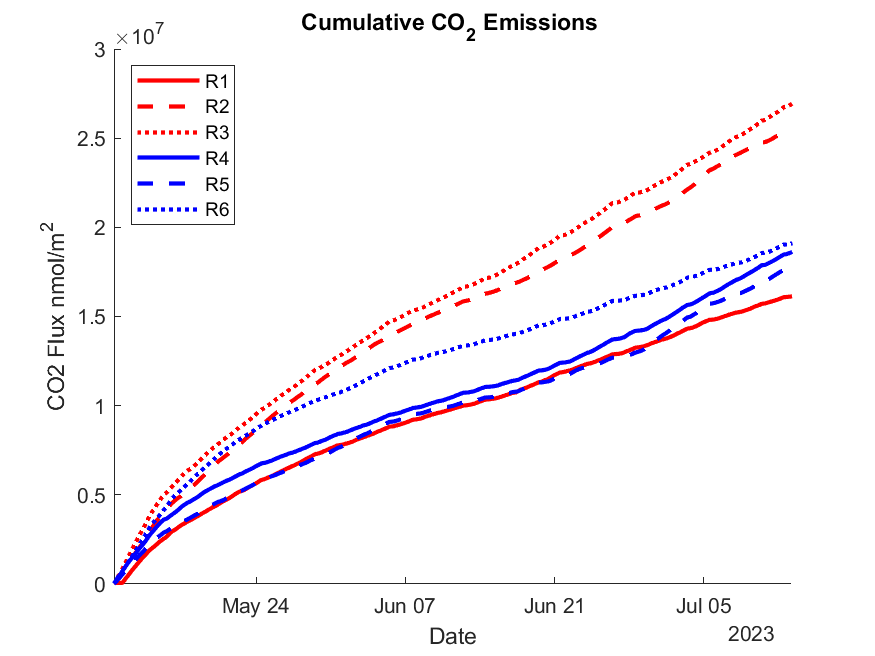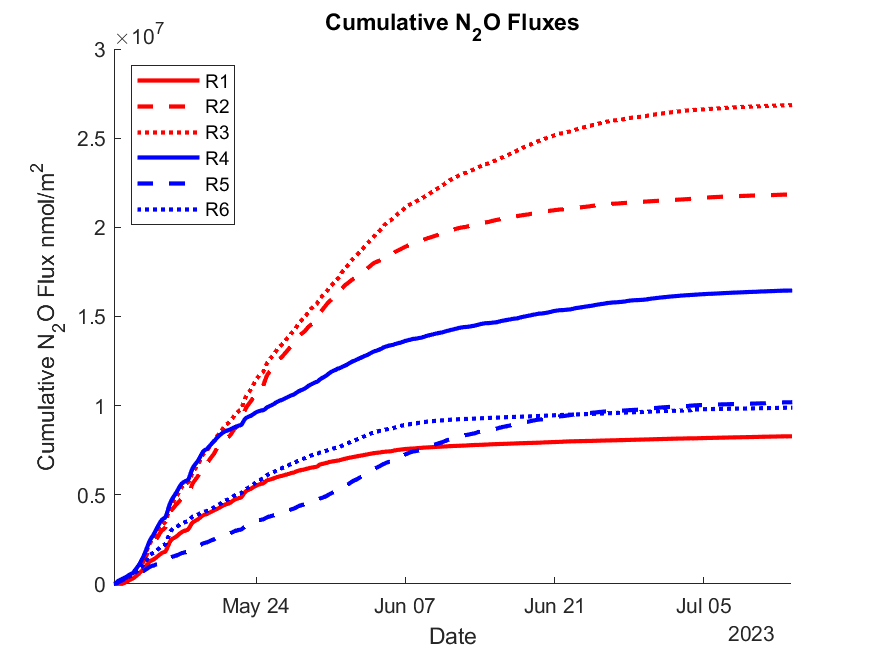The Biometeorology group uses a state-of-the-art mesocosm facility to explore greenhouse gasses emitted from agricultural systems. Historically this facility has been used to explore the feedbacks future climate scenarios, specifically changes in precipitation, will have on greenhouse gas emissions from corn cultivation. Today the facility is being used to test the potential of soil amendments to mitigate greenhouse gas emissions from corn cultivation. The soil amendment currently being tested in the facility is a nitrogen-fixing bacterial inoculant that supplies crops with plant-available nitrogen to support growth. Reducing synthetic nitrogen fertilizer while simultaneously adding the bacterial inoculant as a supplement could potentially lessen the synthetic nitrogen fertilizer that is currently required in agricultural systems to support substantial crop growth and yields. The effectiveness of this amendment is being tested with multiple fertilizer rate reduction amounts in order to measure the impact that the amendment has on crop growth and yield at different fertilizer rates. This will aid in narrowing an optimized best management practice for production and sustainability when using this amendment. The facility is climate-controlled and designed to collect hourly methane, carbon dioxide, water vapor, and nitrous oxide emissions from 6 independent treatments. These high-resolution measurements and the controlled nature of the mesocosms provide a unique tool for understanding the drivers of greenhouse gas emissions from agricultural systems and assessing the efficacy of potential mitigation technology. The mesocosm facility has been supported by The National Science Foundation, the United States Department of Agriculture, and the Minnesota Corn Growers Association.




